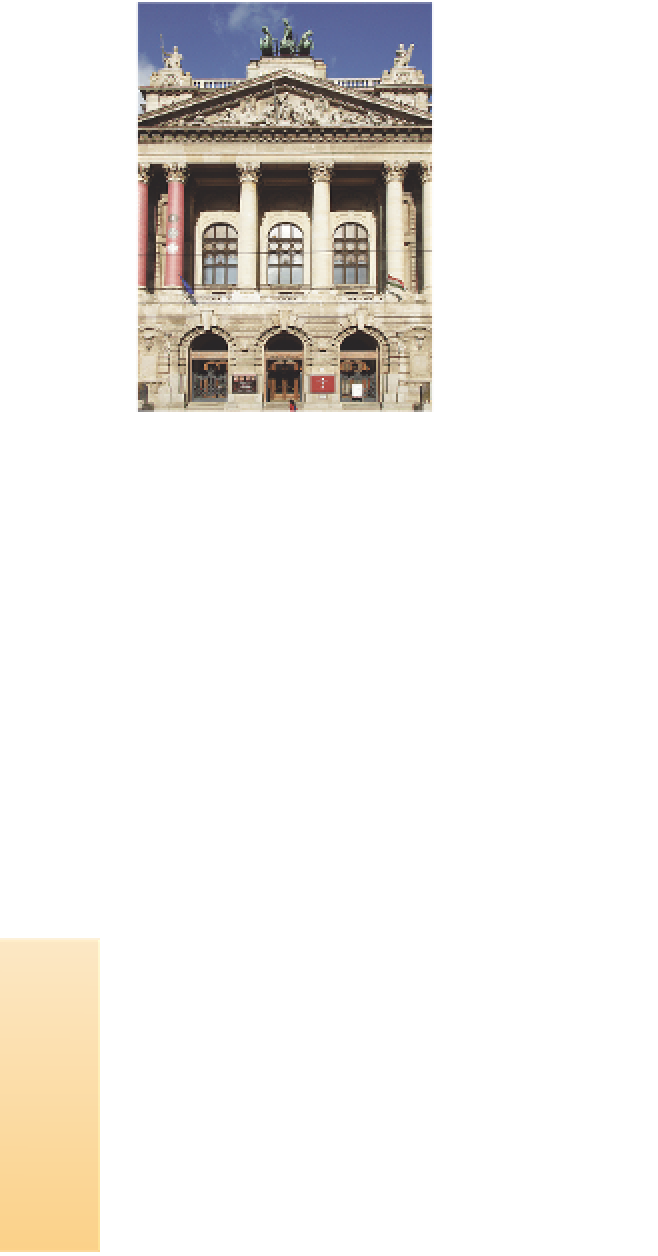Travel Reference
In-Depth Information
!
Hungarian Parliament
More than a 100 years after
it irst opened, Hungary's
Parliament building remains the
city's primary source of civic
pride. It was designed by Imre
Steindl, a professor at Budapest
Technical University, who won an
open competition held to ind
an architect for the building.
Inspired by London's Houses of
Parliament, this magniicent
ediice is illed with paintings,
frescoes and tapestries by
renowned Hungarian artists. The
interior can only be seen by
joining one of the guided tours,
which take place when Parliament
is not in session
(see pp8-11).
@
Kossuth Lajos Square
Façade of the Ethnographical Museum
commemorates the Uprising.
Opposite is another monument
that pays tribute to Ferenc II
Rákóczi, leader of the 1703 revolt
against Austrian rule. A memorial
to Imre Nagy, prime minister and
leader of the 1956 revolt against
the Soviet Union, also stands
nearby.
d
Map K1 • Kossuth Lajos tér
£
Ethnographical Museum
Still considered the best
address in the city, Budapest's
finest square is surrounded on
all sides by splendid buildings. It
was developed at the end of the
19th century, after the unifica-
tion of Buda and Pest gave rise
to large scale construction beyond
the old city walls. The square is
named after Lajos Kossuth, who
led the 1848-9 Uprising against
the Habsburgs and subsequently
became a member of Hungary's
irst democratic government. He
was exiled in 1849 after the
Uprising was suppressed. A mon-
ument in front of the Parliament
This enormous museum is
housed in a splendid Neo-
Classical building on the eastern
side of Kossuth Lajos Square.
Designed by Alajos Hauszmann,
it was home to the Ministry of
Justice until 1947, after which it
became the Ethnographical
Museum. Like the Parliament, the
Museum's grand exterior and
richly ornamented interior relect
the majesty of the Austro-
Hungarian Empire. Although the
exhibits are often overshadowed
by their resplendent surround-
ings, the colourful displays of
local costumes, toys, furnishings
and wedding customs are worth
a visit.
d
Map K1 • V, Kossuth Lajos tér
12 • 473 24 41 • Open 10am-6pm
Tue-Sun • Adm • Dis. access (Szalay utca
entrance) • www.neprajz.hu
Sir Thomas Gresham
Although one of the city's inest
buildings bears his name, Sir
Thomas Gresham never set foot
in Budapest. Gresham Palace
(see
p76)
was commissioned over 300
years after his death by the insur-
ance company he established.
The principal igure in the founding
of the London Royal Exchange,
Gresham is best remembered for
the maxim he made famous:
“bad money drives out good .
75






















































